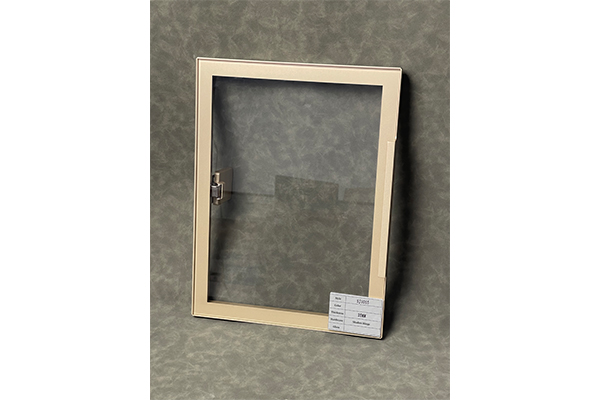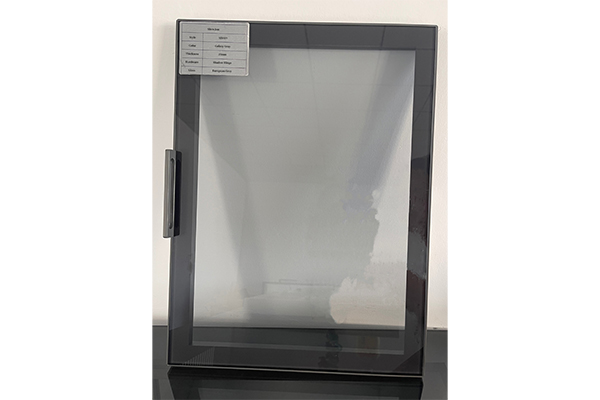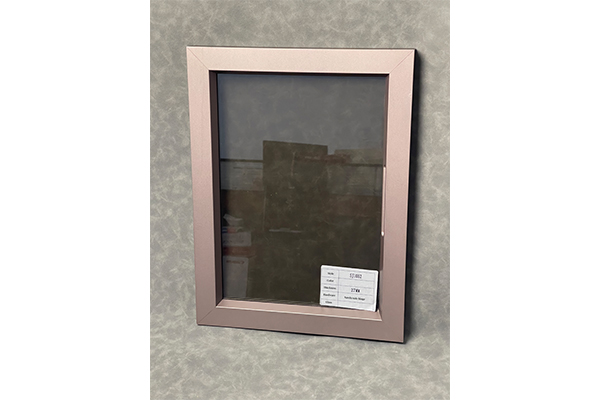What ergonomic factors should be considered in the anti-collision corner design of aluminum frame glass doors?
Release Time : 2025-09-29
The design of the anti-collision angles for aluminum frame glass doors requires deep integration of ergonomic principles. Systematic optimization should be conducted based on human motion characteristics, visual perception, usage scenarios, material feel, dynamic interaction, and child safety to achieve a balance between safety and comfort.
The human body's push, pull, and rotation movements when opening and closing doors follow fixed trajectories. For example, the rotation radius of an inward-opening window may extend beyond a child's head height. If the anti-collision angles of aluminum frame glass doors do not extend to cover these critical motion trajectories, such as by only addressing right angles while ignoring edges along the rotation path, collisions can still occur. The design should utilize motion simulation technology to simulate the opening and closing trajectories of users of different heights (e.g., the average hand size of an adult woman and a child's head model) to determine the minimum coverage radius of the anti-collision angles and ensure that no part of the human body comes into contact with sharp edges during rotation, pushing, or pulling.
Ergonomics emphasizes the use of visual cues to reduce the risk of misjudgment. The transparent nature of aluminum frame glass doors can reduce spatial visibility, especially in bright lighting conditions where the contrast between the glass and the background is reduced. Users may be unaware of the door frame and collide with it. Corner bumpers should incorporate visual warning features, such as using a soft material that contrasts with the aluminum frame (such as silicone corner guards) or enhancing edge visibility through surface texture treatment. Furthermore, the color of the corner bumpers should avoid blending too closely with the aluminum frame, ensuring clear identification at a distance and in varying lighting conditions.
How people interact with aluminum-frame glass doors varies in different scenarios. For example, in public spaces like shopping malls, users may overlook the door frame due to holding objects or being distracted. In homes, children running around are more likely to collide with the door frame. Corner bumpers require tailored design strategies based on the specific scenario. In public spaces, fully enclosed soft corner guards can be used, covering all exposed edges of the door frame. In homes, the focus should be on low-profile areas (e.g., 30-120 cm above the ground), ensuring that the material is non-toxic and scratch-resistant. Furthermore, the installation method of the corner bumpers should consider dynamic interaction, such as rotatable or elastic corner guards that absorb energy through deformation during impact, reducing the risk of damage to the body due to the reaction force.
Ergonomic considerations dictate that corner guard materials not only provide cushioning but also convey a sense of security through touch. While rigid plastic corner guards meet basic impact protection requirements, their cold, hard feel can exacerbate user fear, especially among children. In contrast, soft materials like silicone or TPE, with a refined surface treatment, can simulate the feel of a pacifier, alleviating user anxiety about impacts. Furthermore, the material's elastic modulus must match the aluminum frame to avoid corner guards that are too soft and may deform over time, or too hard and ineffective at cushioning impacts.
Children, due to their short stature and unpredictable behavior, are key targets for corner guards on aluminum frame glass doors. The design should consider children's head height (typically 60-90 cm from the ground) and their gripping habits. For example, widened corner guards should be used at the lower edge of the door frame to cover areas children may touch or impact. Corner guard edges should also be rounded to eliminate any sharp edges that could snag on clothing or skin. Some brands have upgraded the corners of the insulation strips to rounded components, achieving comprehensive structural protection for children.
The installation method of the corner guard directly impacts its ergonomics. While adhesive-backed corner guards are easy to install, they can fall off due to aging or temperature fluctuations, posing a safety hazard. Embedded corner guards require precise alignment with the aluminum frame profile. Inadequate machining can create gaps between the corner guard and the door frame, impacting both aesthetics and protective performance. The design should utilize a modular structure that seamlessly connects the corner guard to the aluminum frame, such as a snap-on installation method. This ensures long-term stability and facilitates future maintenance and replacement.







